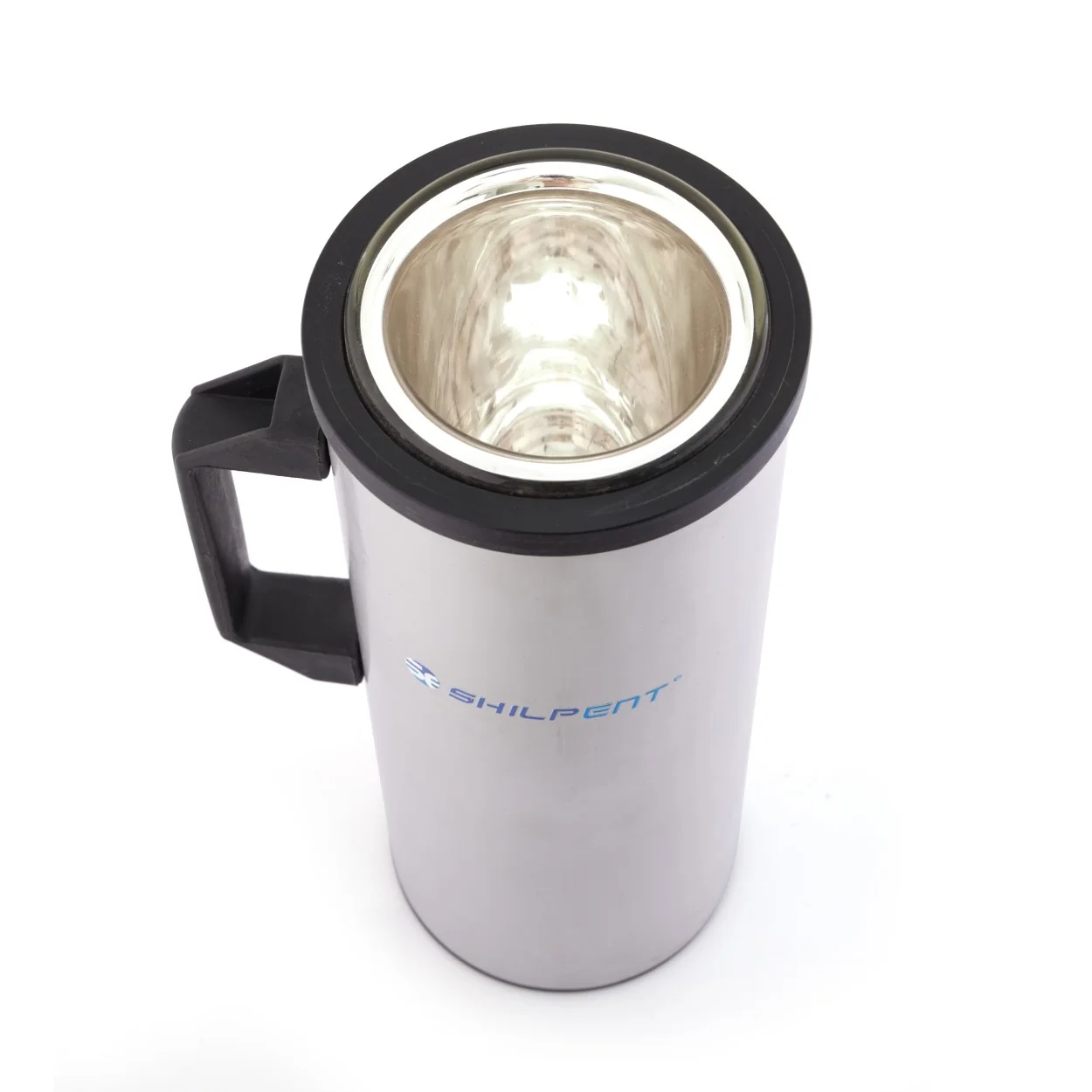






A Dewar Flask serves as a glass vessel explicitly designed to preserve the temperature of stored liquids. It does so by reducing the heat transfer to the surrounding air. It establishes a robust vacuum by employing a double-wall structure to reduce convection and conduction heat transfer. It also features silver-coated inner walls to impede heat radiation and diminish contact points between walls. All these result in exceptional thermal insulation. The cryogenic storage dewar, typically named Dewar flask, is often employed for safely storing materials with shallow boiling points, such as liquid nitrogen or helium. It is named after its inventor, James Dewar. It is usually applied in low-temperature physics and chemistry scenarios. It is present in varied shapes and sizes. The shapes include open buckets, flasks with loosely fitted stoppers, and self-pressurising tanks.
Some loss of cryogenic liquid is unavoidable over time, even if the flask is provided with excellent insulation properties. Therefore, checking the integrity of the vacuum insulation and refilling is essential to maintain the desired low temperature. A regular inspection is needed to preserve the effectiveness of the Dewar flask. All dewar share a common feature in their multi-layered wall construction, including a high vacuum between layers. It significantly minimizes the evaporation of cryogenic materials and contributes to outstanding thermal insulation. It has varied accessories or choices, depending on its particular use. The uses include various types of closures or stoppers, pressure relief devices, and monitoring systems to observe the temperature inside.
Safety measures are thoroughly integrated into dewar designs. It helps to manage the safe release of gas when a cryogenic liquid boils away. The flask evolved as a crucial tool to preserve ultra-cold materials in scientific, industrial, and laboratory settings. Its simple yet efficient design and exceptional insulation properties make it integral for research and experimentation.
Cryogenic Storage Dewar flasks have diversified applications across various fields. It is majorly recognized for its significance in the cryogenic processes. It is specially curated for storing and dispensing cryogenic gases like liquid nitrogen, oxygen, helium, and hydrogen. It simplifies the transmission of cryogenic liquids within factories or laboratories through portable Dewars armed with casters and handles. It insulates electronic components within wireline logging tools, ensuring their safe operation. In the medical field, it contributes to the secure storage of embryos during fertility treatments.
It is indispensable for rapidly freezing samples in research laboratories, serving as a crucial tool for scientific experiments. Vacuum flask is a variant of the Dewar flask category utilized for domestic purposes. It preserves the temperature of beverages and food, whether to keep them hot or cold for extended periods.
We are a proficient and well-equipped manufacturer and supplier of exceptional-quality Dewar Flasks. With over ten years of experience, we prioritize a customer-centric approach. We provide customized solutions at an affordable market price per clients' requirements. Our finest quality product offers flexibility and convenience and is best suited for research and industrial purposes. We follow all safety guidelines and are committed to delivering world-class customer service and post-sales support. We provide delivery all across the globe, so contact us now to get your tailor-made solutions.